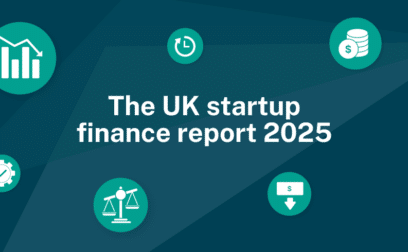Invoice finance is a way of borrowing money using your unpaid invoices. If you’ve issued invoices to your customers and these haven’t yet been paid, invoice finance unlocks this money early. It’s like a business loan, but instead of using a physical asset like a building as security, invoice finance uses your accounts receivable.
Selective invoice finance allows you to finance specific invoices (or customers). This can be useful if you take large orders from one customer but your other invoices are smaller or irregular. By using selective invoice finance, you can get advances for your large invoices, leaving the smaller ones unaffected. There are two main types of selective invoice finance: selective invoice discounting and spot factoring.
Invoice finance is a type of asset finance that enables you to borrow money based on what your customers owe to your business (accounts receivable).
Unpaid invoices of course represent money that will be paid to you. You might offer your customers payment terms of 30, 60, 90 or even 120 days. Assuming your customers pay on time, the value of your sales is still locked in for those 30, 60, 90 or 120 days.
Selective invoice finance lets your company borrow against specific invoices, rather than your entire sales ledger. This form of invoice finance is suitable if your company generates a significant proportion of its income from large, steady customers, and you only want to finance those invoices. Selective invoice financing can also help SMEs raise working capital if they have fluctuating cash flows, as borrowing against their sales ledger may not be cost-effective.
Selective invoice financing comes in two forms: selective invoice discounting and spot factoring.
If you’re a small business with seasonal fluctuations in cash flow, a factoring facility, which is usually whole revenue (i.e., you have to factor your entire sales ledger), might not be the most cost-efficient way for you to raise working capital. You might instead look at selective invoice finance – where you can choose to finance specific invoices. There are two main types of selective invoice finance: spot factoring and selective invoice discounting.
Invoice discounting
Invoice discounting is the simplest type of invoice finance. It involves a lender advancing you money against unpaid invoices and charging a fee based on the value. This form of finance is suitable for bigger companies with a relatively high revenue as it allows them to secure funding against their entire sales ledger.
Invoice discounting is confidential, so your customers don’t know you’re using their invoice as collateral. Your company remains in charge of its own credit collection. It’s also considered riskier so your lender may require evidence that your customers pay promptly and you have in-house capacity to chase outstanding payments.
Invoice factoring
Invoice factoring also lets bigger companies borrow money against their sales ledger, but it’s different from invoice discounting because the process is disclosed. The lender takes control of your credit collection and deals directly with your customers. They pay the lender, who then forwards you the balance less their fee.
Invoice finance can benefit smaller businesses as it means they don’t have to chase their outstanding payments, although they have to prove to the lender they generate a reliable revenue. However, it may not be cost-effective for SMEs with fluctuating cash flows.
Spot factoring
Spot factoring allows you to borrow money against specific unpaid invoices rather than your sales ledger, so it’s also suitable for companies with at least a few large customers. The main difference with selective invoice discounting is that spot factoring is disclosed. You hand over control of the invoices you choose to finance to the lender who collects payment from your customer and forwards your company the balance less its fee.
Spot factoring may suit SMEs that don’t have the resources to chase outstanding payments and are happy to let a lender take the responsibility on their behalf.
Confidential invoice finance
Confidential invoice finance is a suitable funding option if you prefer your customers to remain unaware that you’re securing finance against their invoices.
Confidential invoice finance refers to forms of invoice finance that aren’t disclosed to your customers. We’ve already described invoice discounting, but confidential invoice factoring and CHOCs (Customer Handles Own Collections) are other examples of this type of finance.
CHOCs (Customer Handles Own Collections)
CHOCs, short for Customer Handles Own Collections, is a cross between invoice discounting and invoice factoring. As with invoice discounting, you deal directly with your own customers. However, like invoice factoring, your customers pay the lender instead of your company, so they know you’re using their invoices to secure working capital.
CHOCs are suitable if you’d like to maintain a direct relationship with your client or for early-stage companies that don’t qualify for invoice discounting, as long as they can prove they have the in-house capacity to chase outstanding payments. They can also offer a more cost-effective option for companies with lots of small customers.

































 yet? Register here!
yet? Register here!